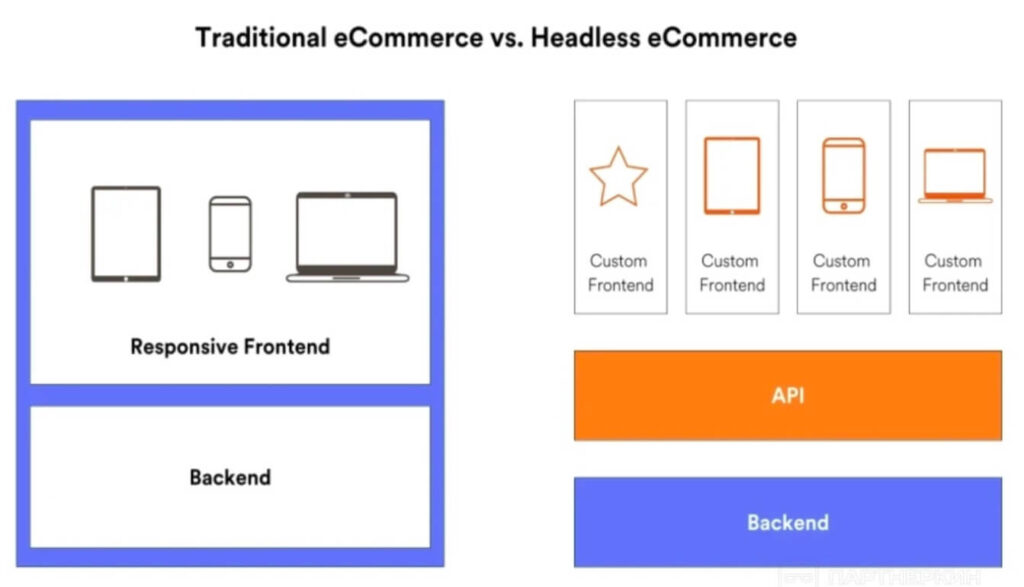Don't miss interesting news

E-commerce has undergone significant changes over the past decade: mobile shopping has become an integral part of life, social commerce is actively developing, Amazon dominates the market, and consumer behavior is constantly changing. How can online retailers keep abreast of these trends and quickly adapt to new technologies? The answer lies in the transition to headless commerce.

Headless commerce is an e-commerce framework that separates the user interface (texts, images, buttons) from the backend (order processing, payments, etc.). Imagine that the interface is the “face” of your store, and the backend is its “brain.”
In 2020-2021, headless commerce technologies attracted more than $1.65 billion in investments, and given the rapid development of e-commerce, this figure will only grow. This type of technology provides flexibility and efficiency, which is becoming a decisive factor in the fierce competition.
In traditional e-commerce, all platform components, such as content management, payment processing, CRM, are connected into one. This makes it easy to set up, but limits the possibilities of customization and integration.
Headless commerce, on the other hand, is based on APIs, which allows you to combine different systems and services while maintaining high flexibility and freedom to implement new solutions. This means a quick project start, easy scaling, and the ability to integrate the latest technologies.

Headless commerce is becoming an ideal solution for many companies, especially for those who use CMS like WordPress, Drupal, or Gatsby. Connecting via API allows you to integrate headless commerce into almost any platform, while ensuring high performance and security.

K2 Sports brings together well-known sports equipment brands. Initially, the company used Salesforce Commerce Cloud, but faced scaling limitations. The transition to headless commerce with BigCommerce allowed to solve these problems. Let’s take a closer look at the challenges and solutions that the company was able to implement using headless commerce.
K2 Sports faced several challenges while using Salesforce Commerce Cloud. One of the main issues was the limited scalability of the platform. It didn’t allow for rapid business expansion and launch of new sites, which limited the company’s growth. Switching to BigCommerce was the solution to this problem, as the new platform provided flexibility and the ability to quickly create new sites for different markets.
Another challenge was the complexity of integration with new systems. It made it difficult to implement new technologies and updates. Using BigCommerce in conjunction with Contentstack helped to easily integrate new platforms and systems, which simplified the process of updates and provided more flexibility.
In addition, the cost of maintaining Salesforce Commerce Cloud was significant. The platform required a lot of resources for maintenance, which created additional financial burdens for the company. The transition to BigCommerce as a SaaS solution significantly reduced support costs, providing more efficient cost management.
The time to publish content was also too long, which affected the speed of response to changes in products and marketing campaigns. Switching to BigCommerce reduced the time to publish content by 90%, which significantly increased the company’s responsiveness.
Lastly, K2 Sports had difficulty managing international sites, which made it difficult to scale to new markets. With the new platform, the company was able to launch 16 sites in different markets in 9 months, making it easier to manage their international presence and expand their business.
Results
The transition to headless commerce helped K2 Sports scale their business, reduce costs, and increase efficiency. They got the following numbers:
Headless commerce is a revolutionary approach for online business. By separating the front-end and back-end, companies gain more freedom, can react faster to market changes, and implement innovations. This opens up new opportunities for retailers, allowing them to remain flexible and competitive in a rapidly changing world.